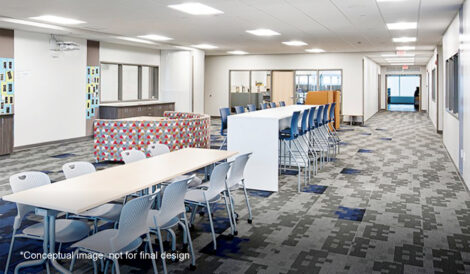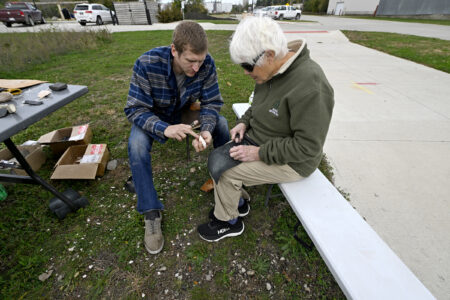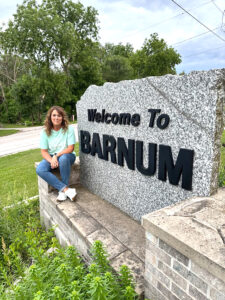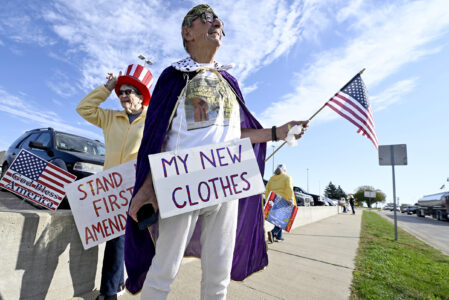FDSH bond vote nears
District leaders say debt will be paid off with no tax increase
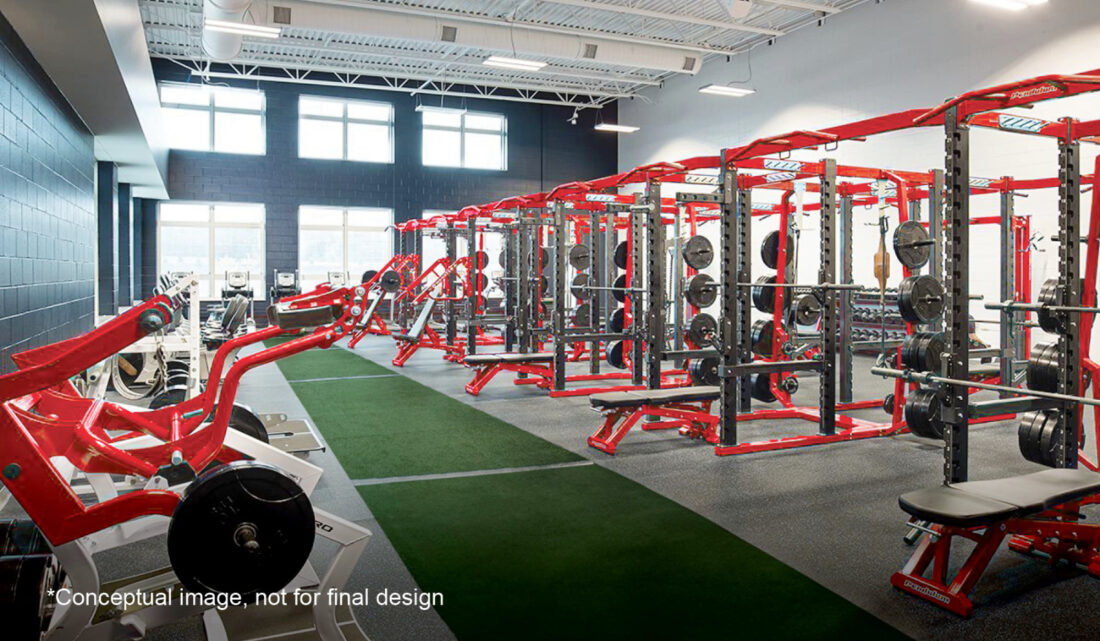
-Submitted image
Voters will take to the polls Nov. 4 to consider a general obligation bond of up to $42.04 million for a number of projects at Fort Dodge Senior High. This image shows the potential for the weight room.
Editor’s note: This story is the third in a three-part series explaining the Fort Dodge Community School District bond referendum.
-
-Submitted image
Voters will take to the polls Nov. 4 to consider a general obligation bond of up to $42.04 million for a number of projects at Fort Dodge Senior High. This image shows the potential for the weight room.
-
-Submitted image
Voters will take to the polls Nov. 4 to consider a general obligation bond of up to $42.04 million for a number of projects at Fort Dodge Senior High. This image shows how a hallway could look after the renovation.
In less than a month on Nov. 4, Fort Dodge voters will decide whether they support a $42 million bond issue to massively overhaul Fort Dodge Senior High School.
In Iowa, bond issue measures must get 60 percent approval to be passed.
Voters will ponder an extension of the current borrowing authority for upgrades to FDSH, which will give no increase to the school’s debt levy portion of the property tax rate.
School Superintendent Josh Porter and Brandon Hansel, the district’s executive director of financial services, said building a completely new high school was pondered. The estimated price tag for that was $120 million, but the debt limit to which the district is authorized to borrow is $108 million.
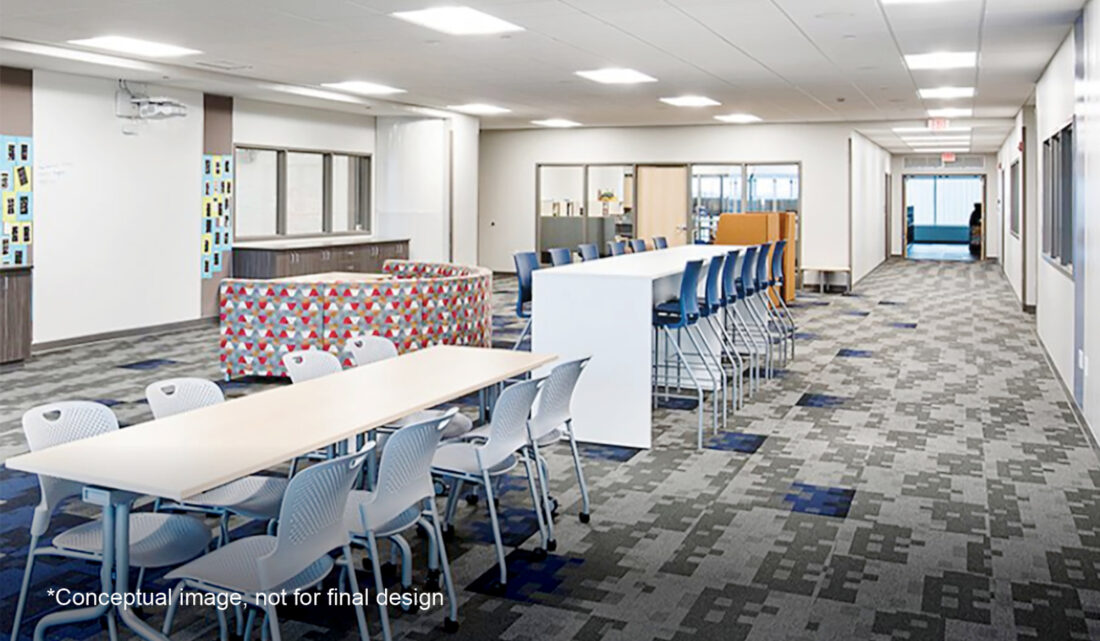
-Submitted image
Voters will take to the polls Nov. 4 to consider a general obligation bond of up to $42.04 million for a number of projects at Fort Dodge Senior High. This image shows how a hallway could look after the renovation.
If passed, the new bonds would be issued by 2027 and be paid back over 20 years.
The most recent Fort Dodge Community School District borrowing was in 2016, with $28 million for the Duncombe Elementary School building project.
Hansel and Porter said passage of the $42 million project will not raise property taxes, although explaining why has two facets to understand.
Many school districts in Iowa have a property tax component called the Debt Service Levy in their budgets for paying back bigger facilities projects. A few, like Fort Dodge, have earmarked a portion of this levy called an Advanced Service Levy, for the purpose of making additional payments on the bonds.
With long range planning in mind, that strategy was put in place after the elementary bond issue, as a secondary money source going to pay off the bonds faster, in order to reduce both the payback time and shave off interest costs. Ultimately, that move by school officials will have reduced interest costs by $1.7 million.
“We have been paying the bonds down early,” Hansel said, and that Advanced Service Levy will end in about three years.
Since that comes off at roughly when any new bonds from an approved $42 million bond issue will go into effect, that’s how Fort Dodge residents would ultimately not pay any more in property taxes than the amount they are used to paying for bond-related levies.
That amount currently is $2.48 per $1,000 of taxable property valuation.
“We feel like people have received it very well. They understand that we can extend the levy that people are currently paying,” Hansel said.
In summarizing why he believes Fort Dodge residents should vote affirmatively, Porter said, “It is financially responsible to do this in this manner. We have a responsibility to our community, students and staff to provide the best education possible.”
Former Webster County Supervisor Mark Campbell, who is now the director of the Iowa Department of Administrative Services, said school officials have done well in releasing key details on the proposal, while noting “there is not a lot of conversation about it” among the wider community.
Campbell said one view he’s heard is that a smaller package of improvements would be less pricey and thereby result in lower property taxes taken by the school district.
School officials tout how the package touches academics, fine arts and sports.
The most costly piece in the $42 million package is $10 million for improving east and west classrooms, including their utilities of HVAC and more.
Other larger segments in the plans are $9 million to reconstruct the school swimming pool, adding new mechanical equipment and renovating the locker rooms, $6.5 million to build a new fitness center, and $5.7 million for fine arts of band, vocal music and the Little Theater.
Other pieces include $4 million for converting from boilers to steam heat, plus $3.4 million for modernizing the career and technical education labs, removal of asbestos and more.
Porter said some people ask, what if the bond measure doesn’t pass? That doesn’t have an easy answer, but he knows that pushing the projects further into the future will only make them more expensive when they happen.
Absentee ballots can now be requested, and early voting is available at the Webster County Courthouse.
There is one more chance for people to learn more about the project in a public forum, which will be held at 6 p.m. Thursday in the Little Theater at the high school.


